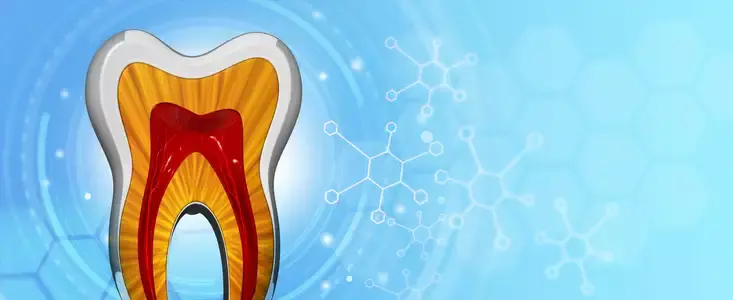If you look into a mirror and only notice the imperfections in your smile, insecurity washes over you and you’re determined to mask your true smile at all costs. You may resolve to the fact that cosmetic dental procedures are too expensive, and you’re stuck with the teeth you have. But have you heard of tooth bonding? It is a painless, cost-efficient way to remedy minor imperfections like a chipped or discolored tooth or to fill a gap in your teeth. You don’t have to hide your smile anymore! Ready to learn more?
What is Tooth Bonding?
Tooth bonding is a cosmetic dental procedure that is less expensive than veneers or crowns. Your dentist will apply a tooth-colored composite resin to cover the damaged tooth and give you the appearance of perfect pearly whites. At your appointment, your dentist will choose a color that matches the composite resin to your natural teeth. First, your dentist will roughen the surface of your tooth and then apply a liquid that enables the bonding agent to adhere to your tooth. Next, your dentist applies the composite resin over the liquid and molds your tooth so that it takes on a natural shape and size. Then, your dentist uses ultraviolet light to harden the resin. If necessary, additional shaping can occur after the material hardens.
Do I Need Tooth Bonding?
You may choose to consider tooth bonding to fix an imperfection like discoloration or to close a small gap between teeth. Others rely on bonding to repair a cracked or decayed tooth. If your teeth are not the same length, tooth bonding can also give you a cohesive smile. If you’re unhappy with the size or appearance of one or two teeth, schedule an appointment with Anderson & Atkins, DDS to determine if tooth bonding is a solution.
Why Choose Tooth Bonding Over Other Procedures?
Typically, tooth bonding does not require anesthesia which makes it a simple and fast procedure. At the end of your appointment, you can go back to work or return to your normal routine. In many cases, a tooth bonding procedure takes less than one hour. Tooth bonding is less expensive than other cosmetic procedures, costing you—on average—between $300 and $600.
Are There Any Downsides to Tooth Bonding?
Tooth bonding is not a permanent solution. You will most likely need to replace the bonding every 5 to 10 years. Tooth bonding is considered a cosmetic procedure and may not be covered by insurance. Make sure you talk to your insurance provider before scheduling your appointment. While there are no risk factors associated with tooth bonding, it is important to know that the bonding material is not as strong as your natural teeth. You may risk damaging the bonding material if you bite your nails, chew on pens and pencils, bite down on hard candy or ice. The bonding resin is also prone to staining if you drink a lot of coffee or smoke.
Veneers and crowns are more expensive, but they are more durable and less likely to stain.
How Do I Take Care of Bonded Teeth?
When you take good care of your teeth, you increase the life of the bonded tooth. This includes brushing twice a day, flossing daily, and scheduling a routine cleaning every six months. Care for your bonded teeth by avoiding hard candy and biting your nails. You can also prevent stains on the bonded tooth by avoiding coffee, tea, or tobacco for two days after the procedure. If you feel any sharp edges or chip the bonded tooth, schedule an appointment with your dentist right away.
A bonded tooth is an excellent way to repair a chipped tooth, fill in a gap, or correct discoloration. For more information about whether or not this procedure is right for you, contact us at Anderson & Atkins, DDS today. It’s time to be confident about your smile!
Share
The year tends to end a lot faster than expected, and many patients are taken by surprise when they realize they may be overlooking (and not taking advantage of) valuable dental benefits. Most dental insurance plans renew annually, and any benefits that haven’t been used usually end up disappearing for good — no rollovers, no
Did you know that your smile is the most recognizable part of your face? A beautiful smile also boosts your self-confidence and promotes positive interactions in your professional and social life. That explains why the American Academy of Cosmetic Dentistry has seen a significant increase in cosmetic dental procedures over the last decade. Cosmetic dentistry





